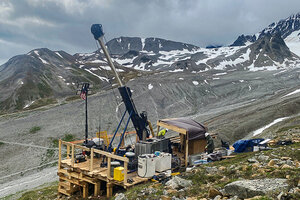If you specialize in luxury home appraisals or even hired to appraise a newly renovated or updated property, you may have to factor in whether the amenities or improvements are excessive for the property or location. Because this can be a particularly complicated issue, we’re breaking down the definition and illustrating examples of how to go about accounting for superadequacy in your appraisal report.
Gain a deep understanding of appraising proposed construction or renovations of a luxury home. Enroll in New Construction Essentials: Luxury Homes.
What is superadequacy?
Per The Dictionary of Real Estate Appraisal, 6th Ed., superadequacy is defined as “an excess in the capacity or quality of a structure or structural component; determined by market standards.” It’s a type of functional obsolescence in which the structure or one of its components is overly improved to a capacity or quality than a prudent buyer or owner would build or pay. While we provide more detailed illustrations below, a simple example would be a 5,000 square foot luxury home built in a neighborhood comprised of two and three-bedroom mid-century ranch homes.
The principle of contribution
Often, the luxury homeowner adds an improvement for their own enjoyment or in an effort to add uniqueness to the home, and they do not consider the principle of contribution. The principle of contribution states that the worth of an improvement is what it adds (or contributes) to the market value of the entire property, regardless of the actual cost of the improvement. An improvement that is added or modified should improve the property’s market value (possibly through extending the economic life).
Appraisers may need to explain this principle to the client when a costly improvement such as a swimming pool is given minimal or no contributory value in the appraisal.
The presence of a superadequacy
The presence of a superadequacy should not alone preclude an appraiser from developing the reproduction cost, especially when completing the cost approach for proposed construction. In fact, by developing the reproduction cost and accounting for the superadequacy as functional depreciation, it creates transparency and adds clarity to the appraisal report.
Accounting for a superadequacy
Example #1: Superadequate custom fireplace
Let’s say an appraiser is reviewing the prints and specs of a proposed residential home construction, in which a two-story masonry fireplace is proposed to be added to the residence’s office and the cost estimate is $42,000 for the materials and installation. The home will also have a towering and custom stone fireplace in the home’s great room.
Based on market research, the appraiser determines that this second custom fireplace is superadequate for luxury homes in the subject’s competitive market area, which is a temperate region.
The appraiser notes that the subject home will have two fireplaces in her appraisal report, but she deducts functional depreciation (superadequacy) from the reproduction cost new of the improvements in the cost approach and makes no adjustment from the comparable sales that have one fireplace compared to the subject’s two fireplaces in the sales comparison approach.
The appraiser indicates in the appraisal report that the second custom fireplace is superadequate and does not contribute to the subject’s market value.
Example #2: Superadequate 12-car garage
Let’s suppose that a luxury homeowner is a car enthusiast and builds a 12-car garage to accommodate his/her hobby. However, a majority of the luxury homes in this market have only a 3-car or 4-car garage. Therefore, the additional 8 car bays may offer no additional contributory value in this market.
The appraiser determines from a cost manual that the cost per square foot of a 4-car garage, of good quality, is $38.25. The cost per square foot of a 12-car garage is $33.75, which is a lower cost per square foot due to economies of scale. Since the additional 8-car garage space is considered superadequate in the subject’s market, the appraiser develops the cost estimate for the garage as follows:
The area for the entire 12-car garage is calculated at 2,640 sq. ft. based on the blue prints.
The area for the 4-car garage is calculated at 880 sq. ft. based on the blue prints.
The area for the 8-car garage is calculated at 1,760 sq. ft. based on the blue prints.
12-car garage reproduction cost new: 2,640 x $33.75 = $89,100
Less functional depreciation (superadequacy): 1,760 x $33.75 = $59,400*
The depreciated RCN of the garage is: $29,700
*Cost of building the 8-car garage space (the superadequacy)
If on the other hand, we develop the replacement cost and only calculate the cost new of the 4-car garage space and do not deduct for the superadequacy or consider the construction cost per square foot of a 12-car garage, the result is different as follows:
4-car garage replacement cost new: 880 x $38.25= $33,600
Since the homeowner plans to build the 12-car garage even though it is superadequate, the construction cost has the benefit of scale economies. Thus, the first process is more transparent in understanding how this superadequacy directly impacts the cost approach to value.
Diversify your appraisal business: Become a Certified Luxury Home Appraiser
If you’d like to diversify your business, stand out from other appraisers, and take on more challenging properties, learn about our Certified Luxury Home Appraiser program. If you’re a part of our Unlimited Learning Membership, this program is included free!


